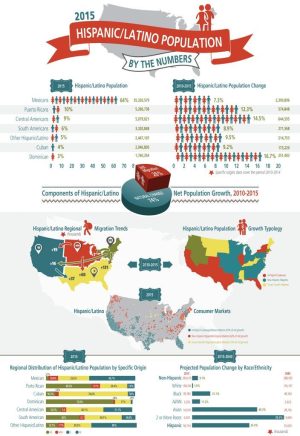News & Stories
Tapping a booming demographic
Demographic shifts coincide with changes in consumer buying behaviors – and tapping the power of these up-and-coming consumers can position firms for early success in a booming market.
Hispanics and Latinos are rapidly reshaping U.S. demography, representing 18 percent of the nation’s population and growing at a rate that’s outpacing total U.S. population growth. With this rapid growth, their buying power has also become impressive – to the tune of an estimated $1.5 trillion in 2015.
Convenience store (C-store) owners have a unique opportunity to garner a greater share of these dollars, says Jim Johnson, the William R. Kenan Jr. Distinguished Professor of Strategy and Entrepreneurship at UNC Kenan-Flagler Business School.
Successfully tapping this emergent market hinges on C-store owners’ understanding of the diversity that exists within the Hispanic/Latino population and their ability to customize their mix of products and services to align with specific consumer tastes and preferences in their local markets.
Both international and domestic migration patterns have characterized the growth of the U.S. Hispanic and Latino populations and the unique markets that have developed.
- Immigrant gateways more mature markets – mainly immigrant gateways that have served as ports of entry for decades. They are long-established and hold nearly 80 percent of the nation’s Hispanic and Latino populations.
- New Hispanic magnets include about 30 states that can be described as emerging markets, where the Hispanic and Latino populations ballooned during the late 1990s into the early 2000s. Since then, these states have amassed about one-fifth of the total Hispanic and Latino populations in the U.S.
- Future growth magnets mark perhaps the largest growth market opportunity for C-store owners. Influx in these states, which scatter along the northern U.S. border, the South and the District of Columbia, occurred fairly recent – mainly since 2010.
The origins of U.S. Hispanics and Latinos are unique and broad, spanning continents and nations alike. They include backgrounds from Mexico, Puerto Rico, Central America, South America, Cuba, the Dominican Republic and more. C–store owners must understand that where Hispanics and Latinos live in the U.S. is strongly influenced by their country of origin, because each group enters the U.S. with different cultural orientations and consumer tastes.
Given the strong and deeply-rooted family orientation in Hispanic and Latino culture, C-store owners should make their stores true shopping destinations. They must think beyond the scope of the traditional mix, not just provide healthy food and basic household items. Instead, they should align with specific cultural tastes and preferences and provide a range of services that address their basic social and health needs.
C-store owners, in particular, are positioned to create these one-stop venues, which could include beauty salons, barber shops and convenient-care clinic franchises as part of their services offerings, as well as plans for multi-generational fitness parks or playgrounds in the design of future stores.
As the various specific origin groups become more upwardly mobile, Hispanic and Latino buying power will only increase in the years ahead. For C-store owners, making a concerted effort to attract and retain this booming consumer group just makes good business sense.
By Jonathan Ponciano (BA ’17)
